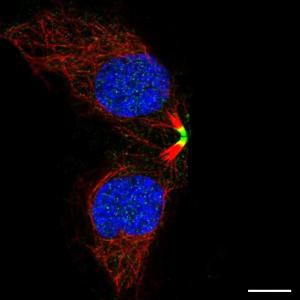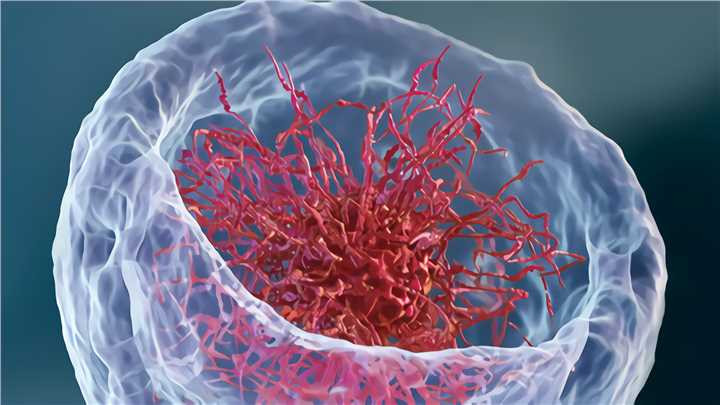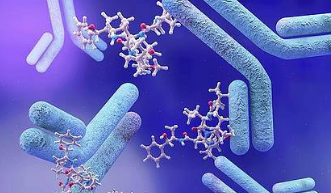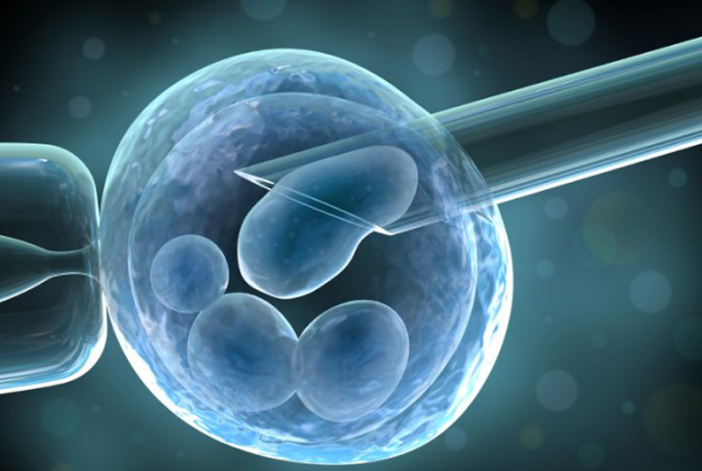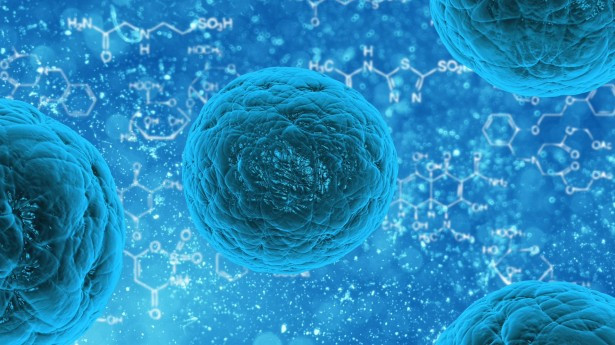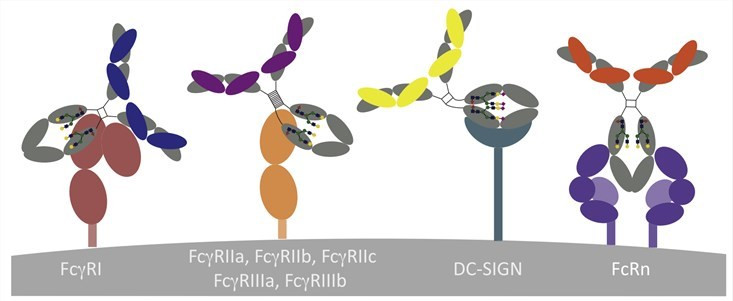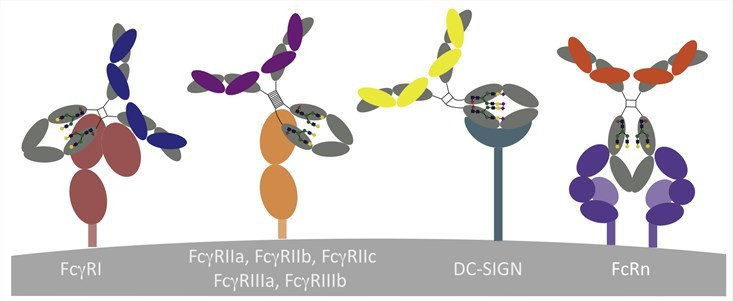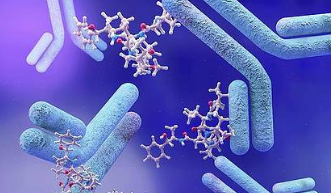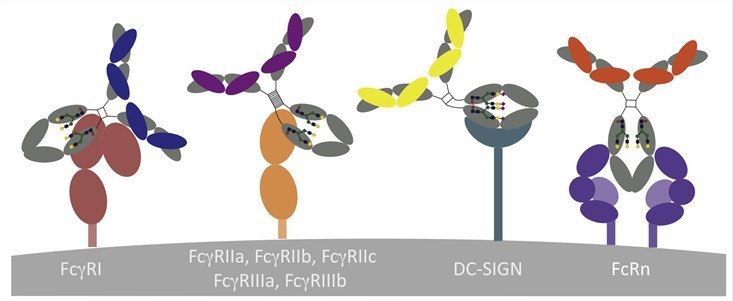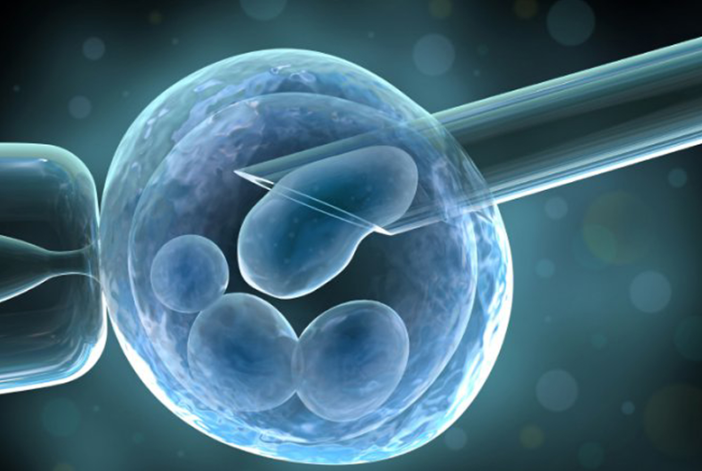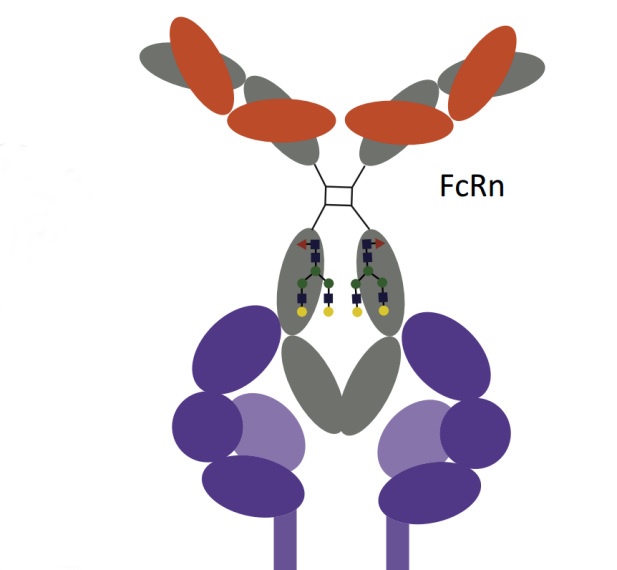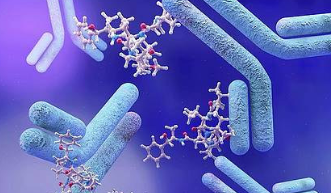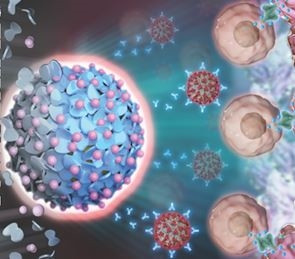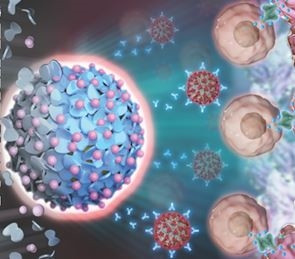creativebiolabs
@creativebiolabsNotice: Undefined index: user_follows in /home/admin/www/v2.anonup.com/themes/default/apps/profile/content.phtml on line 273
Creative Biolabs has invited Dr. Magnus A.G. Hoffmann to walk us through the application of hybrid mRNA technology in vaccine development, strategies for optimizing hybrid mRNA vaccines, and the use of this technology in developing pan-coronavirus vaccines.
During this webinar, we will explore the following key topics:
Description and development of the hybrid mRNA technology that combines features of mRNA- and protein nanoparticle-based vaccines
In vivo evaluation of the hybrid mRNA technology for SARS-CoV-2 in mice, including new data on hybrid mRNA-based booster immunizations in pre-vaccinated mice
Optimization strategies for hybrid mRNA vaccines, including preliminary data on new designs that enhance expression
Application of the hybrid mRNA vaccine technology as a pan-coronavirus vaccine platform
Register now to secure your spot: https://mrna.creative-biolabs.com/eabr-nanoparticles-as-a-platform-technology-for-hybrid-mrna-vaccine.htm
Creative Biolabs has invited Dr. Francisco J. Quintana to walk us through how astrocytes regulate CNS inflammation.
During this webinar, we will discuss the following key points:
Introduction of astrocytes
Astrocyte functions in homeostasis
Astrocyte functions in disease
Novel methods to study astrocytes
Regulation of astrocyte responses by cell-cell interactions
Long-term epigenetic control of astrocyte responses
Future directions in astrocyte research
Date and Time: October 30, 2024, from 2:00 PM to 3:00 PM ET
Registration Link:
https://neuros.creative-biolabs.com/regulation-of-cns-inflammation-by-astrocytes.htm
Custom Anti-Microbiome Antibody Development Service - Creative Biolabs
Creative Biolabs provides custom anti-microbiome antibody development services for our clients all over the world.
https://www.creative-biolabs.com/microbiome-ab/custom-anti-microbiome-antibody-development-service.htm
Creative Biolabs has extensive experience in offering comprehensive antibody development services for clients worldwide. Leveraging novel research methods and cutting-edge tools, we are dedicated to meeting the specific needs of each customer with the best project design, ensuring high-quality outcomes.
One of our key offerings is Anti-Microbiome Monoclonal Antibody Development. This service is designed to target specific microbial components within the human microbiome, aiding in the study of host-microbiome interactions, immune response modulation, and potential therapeutic applications for diseases linked to microbial dysbiosis. With our advanced technology, Creative Biolabs supports tailored antibody development for various microbiome-related research and therapeutic needs.
For more: https://www.creative-biolabs.com/microbiome-ab/custom-anti-microbiome-antibody-development-service.htm
Creative Biolabs is a world-renowned cell supplier, specializing in the development of robust cell culture systems. Staying at the forefront of technology, we continually upgrade our cell isolation platforms to ensure they meet the evolving needs of our global customers. One of our key offerings includes preadipocytes and adipocytes, essential models for studying fat cell biology, metabolism, and related diseases.
For more: https://www.creative-biolabs.com/3d-biology/category-preadipocytes-adipocytes-1411.htm
Microfluidic systems can efficiently concentrate nanoparticles through techniques like hydrodynamic focusing and filtration. By manipulating fluid dynamics, these systems enable precise control over the concentration and size distribution of nanoparticles, enhancing their applicability in drug delivery, diagnostics, and biosensing. This concentration process can improve the effectiveness of nanoparticles in various biomedical applications. Would you like to delve into specific microfluidic techniques or their applications? Visit https://microfluidics.creative-biolabs.com/single-cell-sequencing.htm
Adipogenesis is the process by which MSCs commit to the adipose lineage and differentiate into adipocytes. Signaling molecules cause MSCs to become preadipocytes, which then develop into adipocytes, starting this process. After then, preadipocytes are exposed to differentiation inducers such cyclic AMP, glucocorticoids, and insulin-like growth factor1, which cause the expression of adipocyte genes and the development of an adipocyte phenotype. Creative Biolabs can assist in causing your MSCs to differentiate into both brown and white adipocytes by using the right cultures.
For more: https://www.creative-biolabs.com/stem-cell-therapy/mesenchymal-stem-cells-mscs-differentiation-services.htm
Ideal for transfecting nucleic acids into primary neurons and cultured neuronal cell lines in a temporary or stable manner. For each 6 cm cell culture plate, use roughly 15–120 μl of NeuroINTM Transfection Reagent and 6–8 μg of DNA (in the special DNA Dilution buffer supplied, if necessary). The NeuroINTM Transfection Kit has been successfully used to transfect the following cells:
Glioma C6 in humans
Primary cortical neurons in rats
cells of the dorsal Root Ganglion (DRG) in rats
NT2 neurons, or progenitor cells of humans
Human developed cells, or NT neurons
Mouse subventricular zone (SVZ) cells
Mouse white matter cells
For more: https://neuros.creative-biolabs.com/neuroin-neural-transfection-kit-55308.htm
In order to address the need for exosomes in large quantities, exosome manufacturing aims to increase production efficiency and yields while maintaining purity. For the needs of industrial exosome production, Creative Biolabs provides large-scale exosome extraction and purification solutions. In order to deliver specialized functional exosomes, our services not only facilitate the scalable upstream synthesis of exosomes but also consider the characterization, profiling, and prospective downstream research of exosome products.
For more: https://www.creative-biolabs.com/exosome/exosome-manufacturing-services.htm
Experts in non-IgG therapeutic antibody creation, Creative Biolabs has a wealth of knowledge in immunogenicity assessment, safety assessment, antibody design, and production process optimization. We have established a solid reputation with our global clientele by successfully completing a number of difficult IgA antibody development projects. Here, we offer several high-quality and pure readymade IgA monoclonal and polyclonal antibodies.
For more: https://non-igg-ab.creative-biolabs.com/category-iga-342.htm
Experts in non-IgG therapeutic antibody creation, Creative Biolabs has a wealth of knowledge in immunogenicity assessment, safety assessment, antibody design, and production process optimization. We have established a solid reputation with our global clientele by successfully completing a number of difficult IgA antibody development projects. Here, we offer several high-quality and pure readymade IgA monoclonal and polyclonal antibodies.
For more: https://non-igg-ab.creative-biolabs.com/category-iga-342.htm
A positive pole (anode) is placed on one end of the gel and a negative pole (cathode) is placed on the other end for SDS-PAGE. Proteins may be sorted by size using electrophoresis because the negatively charged SDS that is coupled to the proteins causes the protein complexes to migrate towards the positive pole, or anode. Generally speaking, a protein migrates through the gel more slowly the larger it is.
For more: https://www.antibody-creativebiolabs.com/running-an-sds-page-gel-in-western-blot-assay.htm
The indirect targeting of mRNA is essential to translating ribosome affinity purification (TRAP). By attaching an affinity tag, such as enhanced GFP (EGFP), to the large ribosomal subunit protein L10a, indirect labeling of mRNA can be accomplished. The EGFP-L10a transgene is targeted to express in the desired cell type using the right genetic components. While translating polysomes from targeted cells have EGFP tags, those from non-targeted cells do not.
For more: https://ribosome.creative-biolabs.com/translating-ribosome-affinity-purification-trap.htm
Point of Care Technology (POCT) System - Creative Biolabs
Creative Biolabs offers microfluidics-based point of care technology (POCT) services to perform rapid, sensitive, and real-time in vitro diagnostic testing.
https://microfluidics.creative-biolabs.com/point-of-care-technology-poct.htm
As a result, in order to treat acute illnesses quickly and for homecare diagnostics, there is an increasing requirement to present diagnostic results at the point-of-care. Creative Biolabs has looked into a number of cutting-edge technologies, including microfluidic technology, to address the unique needs of POCT systems and overcome the limitations of traditional POCT systems. Here, our skilled engineers assist customers in completing several point-of-care studies by offering one-stop microfluidic integrated solutions for POCT.
For more: https://microfluidics.creative-biolabs.com/point-of-care-technology-poct.htm
This innovative platform can be used in conjunction with next-generation sequencing (NGS) to isolate monoclonal antibodies (mAbs) with paired heavy chain and light chain from a wide range of animals, including humans, rabbits, rats, mice, chickens, camelids, sheep, primates, dogs, cows, and so on.
2Principal Attributes and Benefits of the Anti-GlyTM Platform
3a wide variety of glycoprotein production systems, such as yeast, mammalian, insect, and plant cells in addition to Escherichia coli.
4Different screening techniques to find anti-glycoprotein antibodies
5Various species are accessible
6High throughput and sensitivity
7economical and quick turnaround
For more: https://www.creative-biolabs.com/glycoprotein/anti-glycoprotein-antibody-development.htm
This innovative platform can be used in conjunction with next-generation sequencing (NGS) to isolate monoclonal antibodies (mAbs) with paired heavy chain and light chain from a wide range of animals, including humans, rabbits, rats, mice, chickens, camelids, sheep, primates, dogs, cows, and so on.
2Principal Attributes and Benefits of the Anti-GlyTM Platform
3a wide variety of glycoprotein production systems, such as yeast, mammalian, insect, and plant cells in addition to Escherichia coli.
4Different screening techniques to find anti-glycoprotein antibodies
5Various species are accessible
6High throughput and sensitivity
7economical and quick turnaround
For more: https://www.creative-biolabs.com/glycoprotein/anti-glycoprotein-antibody-development.htm
How to Construct An iPSC-based Disease Model?
The process of creatingiPSCs from somatic cells (such as fibroblast, blood mononuclear cells, or urine cells from a patient or a healthy individual) is the first step in iPSC-based disease modeling. By applying specific culture conditions, these iPSCs can be differentiated into cell types relevant to the disease. Generally speaking, building disease models with IPSC frequently entails a number of phases, each of which is tailored to a particular disease and cell type.
For more: https://www.creative-biolabs.com/stem-cell-therapy/ipsc-for-disease-model-construction.htm
The H129 strain of the herpes simplex virus (HSV) has been extensively employed as an anterograde tracer. The inclusion of fluorescent protein-modified HSV can efficiently mark the connections between the surrounding and center parts of the brain in addition to the connections between different brain regions.
For HSV-LSL-tdtomato-2a-TK(H356)[Herpes Simplex Virus (HSV)], please visit https://neuros.creative-biolabs.com/hsv-lsl-tdtomato-2a-tk-h356-herpes-simplex-virus-hsv-15043.htm.
As noninvasive alternatives to biopsy, several serum biomarkers and imaging technologies have been developed as a result of recent technological advancements. They have proven to have benefits such being far safer, more patient-acceptable, less costly, and repeatable as needed. As a result, combinations of maker panels or biomarkers have been established for clinical application in recent years, leading to a dramatic drop in the number of biopsies conducted. These markers include indirect indicators linked to liver injury and/or a deterioration in liver function, as well as direct indicators that may show alterations in the ECM structure. While there is ongoing debate on the diagnostic utility and accuracy of these techniques, preliminary data indicates that they may be at least as effective as liver biopsy.
For fibrosis diagnostic development, please visit https://www.creative-biolabs.com/drug-discovery/diagnostics/biomarkers-and-antibodies-development-for-liver-fibrosis.htm.
Brief Synopsis
Accurate measurement of leftover Protein A (rProtein A) in monoclonal antibody treatments
Synopsis
Our kit for measuring residual protein A ELISA detects protein A found in treatments involving monoclonal antibodies. Low intra- and inter-assay variability as well as minimal lot-to-lot variability were the design goals of the Residual Protein A ELISA kit. The highest level of sensitivity on the market is offered by Creative Biolabs Biosciences' Residual Protein A ELISA kit.
For residual protein A ELISA kits, please visit https://www.creative-biolabs.com/immuno-oncology/residual-protein-a-elisa-kit-680.htm.
A crucial method for understanding the immune repertoires of thousands of immune cells, identifying the essential adaptive immune responses to viruses, and investigating novel immunomodulatory treatment approaches is single cell immune profiling. Creative Biolabs aims to offer the most comprehensive immune profiling services as a flexible partner in single cell multiomics services. This includes, but is not limited to, analyses of immune cell subpopulations, diversity, antigen specificity, cellular context, BCR/TCR sequences, and TCR-MHC specificity. With our single cell solutions, we are dedicated to accelerating your immune profiling program and shortening our clients' overall development timelines.
For more: https://singlecell.creative-biolabs.com/single-cell-immune-profiling-for-sars-cov-2-covid-19-research.htm
A perfect vaccination ought to be molecularly defined, safe, and stable. Dendritic cell, recombinant vector, DNA, and peptide vaccines are among the innovative vaccine types now under development.
Peptide Vaccine: A peptide vaccine imparts immunity to an organism by acting as a pathogen. A peptide vaccination always contains synthetic proteins that are natural counterparts of pathogen proteins.
For more: https://www.creative-biolabs.com/exosome/vaccine-development.htm
The first IgE antibody trial triggers a distinct and potent immune response, which makes it extremely important from a scientific standpoint. After this fruitful trial, researchers intend to carry out further clinical development of MOv18 IgE in order to guarantee its safety in patients. The ultimate objective is to target cancer cells with a comparable level of efficiency, providing patients with a fresh therapy option.
For more: https://non-igg-ab.creative-biolabs.com/groundbreaking-cancer-research-novel-ige-antibody-shows-promise.htm
Ankyrin repeats, which are linked to interactions between proteins, are found in the protein that this gene encodes. Research on mice indicates that this protein has a role in the development of the liver. For this gene, two transcript variants that encode distinct isoforms have been discovered.
For more: https://www.antibody-creativebiolabs.com/symbolsearch-ankrd17.htm
The Luciferase-labeled human U87MG cell was created by researchers at Creative Biolabs. It is useful for intravital imaging to assess anti-cancer agents in gallbladder carcinoma. Additionally, the Luciferase-labeled human U87MG cell helps select mice for treatment groups based on equivalent tumor burden.
For more: https://www.creative-biolabs.com/immuno-oncology/cellonco-human-u87mg-luc-tumor-cell-line-488.htm
IgG4 is the predominant kind of antibody engaged in Fab-arm exchange. Human immunoglobulin G (IgG) subtype IgG4 makes up 3%–6% of the total IgG in human serum. Because IgG4 possesses a reversible reduction site (S228P) at the inter-heavy chain disulfide bond, which temporarily reduces the inter-heavy chain disulfide bond to half-antibodies, it varies from other IgG subtypes. IgG4 half-antibodies can recombine to create whole antibodies, which can lead to distinct light chain pairing or bispecificity. We refer to this phenomena as heavy chain exchange, or Fab-arm exchange.
Website: https://www.creative-biolabs.com/bsab/overview-of-fab-arm-exchange-technology.htm
Transferrin, a highly prevalent serum glycoprotein that functions to transport iron to tissues, is present in serum at 3–4 mg/mL and binds iron firmly yet reversibly. Transferrin comprises 679 amino acid residues, is around 80 kDa in size, and possesses two high-affinity Fe3+ -binding sites, one in the N-terminal domain and the other in the C-terminal domain. The half-life of human transferrin is reported to be either 10–12 days or 7–10 days.
For more: https://half-life-extension.creative-biolabs.com/transferrin-fusion-based-half-life-extension-service.htm
Transferrin, a highly prevalent serum glycoprotein that functions to transport iron to tissues, is present in serum at 3–4 mg/mL and binds iron firmly yet reversibly. Transferrin comprises 679 amino acid residues, is around 80 kDa in size, and possesses two high-affinity Fe3+ -binding sites, one in the N-terminal domain and the other in the C-terminal domain. The half-life of human transferrin is reported to be either 10–12 days or 7–10 days.
For more: https://half-life-extension.creative-biolabs.com/transferrin-fusion-based-half-life-extension-service.htm
RNA binding proteins (RBPs) are linked to the prevalent hereditary disorder known as fragile X syndrome (FXS). It was discovered that FMRP, or fragile X mental retardation protein, was absent in cases of FXS. A significant and actively researched selective RBP is FMRP. It is present in the soma, dendrites, and axon of the neuron and is crucial for healthy synaptic function. Between 85 and 90 percent of FMRPs are engaged in the functions of polysomes, including as translational control and neurodegeneration.
For more: https://ribosome.creative-biolabs.com/fragile-x-syndrome-fxs.htm
RNA binding proteins (RBPs) are linked to the prevalent hereditary disorder known as fragile X syndrome (FXS). It was discovered that FMRP, or fragile X mental retardation protein, was absent in cases of FXS. A significant and actively researched selective RBP is FMRP. It is present in the soma, dendrites, and axon of the neuron and is crucial for healthy synaptic function. Between 85 and 90 percent of FMRPs are engaged in the functions of polysomes, including as translational control and neurodegeneration.
For more: https://ribosome.creative-biolabs.com/fragile-x-syndrome-fxs.htm


